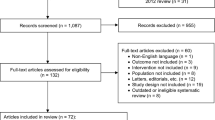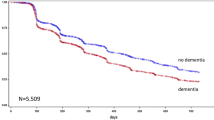Abstract
Background: Unstable bladder symptoms are a common problem in general practice. Drug therapy with anticholinergic drugs is frequently used in the management of this condition. However such drugs are associated with a high incidence of anticholinergic adverse effects. Tolterodine is a competitive anticholinergic agent, selective for the bladder as opposed to the salivary glands.
Objective: To monitor the safety of tolterodine as used in general practice patients in England for the treatment of urinary frequency, urgency and incontinence.
Design: Prospective observational cohort study.
Patients and participants: 14 526 patients [mean age 62.7 (SD 16.4) years; 68.6% female].
Methods: Patients prescribed tolterodine in general practice, soon after the release of the drug in the UK, were followed up for a minimum of 6 months using the technique of prescription-event monitoring (PEM).
Results: The most common adverse events reported were dry mouth, headache, malaise, constipation, dyspepsia, nausea and vomiting and pain in abdomen. We identified some uncommon events as possible adverse drug reactions — notably hallucinations, tachycardia and palpitations. The prevalence of these events was compared with that in patient cohorts for other drugs on the PEM database. The age- and sex-adjusted relative risk of hallucinations on tolterodine compared with 10 drugs of other therapeutic classes, and with terodiline, another drug indicated for bladder instability, was 4.85 [95% confidence interval (CI) 2.72 to 8.66] and 1.25 (95% CI 0.62 to 2.53), respectively. There was no significant difference for tachycardia/palpitation in this comparison.
Conclusions: Tolterodine is well tolerated in general practice at the recommended daily dose. Hallucinations, tachycardia and palpitations are infrequently associated with the drug.








Similar content being viewed by others
References
Detrusitol?. Summary of product characteristics. Milton Keynes: Pharmacia & Upjohn, 1997
Abrams P, Freeman R, Anderstrom C, et al. Tolterodine, a new anti-muscarinic agent: as effective but better tolerated than oxybutynin inpatients with an overactive bladder. Br J Urol 1998; 81: 801–10
Dunn NR, Mann RD. Prescription-event and other forms of epidemiological monitoring of side effects in the UK. Clin Exp Immunol 1999; 29Suppl. 3: 217–39
Kubota K, Inman WHW. Terminology in prescription event monitoring. Eur J Clin Pharmacol 1994; 46: 497–500
Mann RD, Rawlins MD, Fletcher P. Age and the spontaneous reporting of adverse reactions in the United Kingdom. Pharmacoepidemiol Drug Saf 1992; 1: 19–23
Machin D, Campbell MJ, Fayers PM, et al. Sample size tables for clinical studies. Oxford: Blackwell Science, 1997
International Ethical Guidelines for Biomedical Research involving Human Subjects. Geneva: Council for International Organisations of Medical Sciences/World Health Organisation, 1993
Chapple CR. Muscarinic receptor antagonists in the treatment of overactive bladder. Urology 2000; 55Suppl. 5: 33–46
National Prescribing Centre. Drug treatment of urinary incontinence in adults. MeReC Bull 2000; 11 (3): 9–12
Committee of Safety of Medicines. Withdrawal of terodiline. Curr Probl 1991; 32: 1
MacKay FJ, Dunn NR, Wilton LV, et al. A comparison of fluvoxamine, fluoxetine, sertraline and paroxetine examined by observational cohort studies. Pharmacoepidemiol Drug Saf 1997; 6: 235–46
Micturin data sheet. Data sheet compendium 1990–1991. London: Association of British Pharmaceutical Industry: 786–7
Langtry HD, McTavish D. Terodiline: a review of its pharmacological properties, and therapeutic use in the treatment of urinary incontinence. Drugs 1990; 40(5): 748–61
Larsson G, Hallen B, Nilvebrandt L. Tolterodine in the treatment of overactive bladder: analysis of the pooled phase II efficacy and safety data. Urology 1999; 53: 990–8
Roden, D. Antiarrythmic drugs. In: Hardman J, Limbird, L (editors). Goodman and Gilman’s the pharmacological basis of therapeutics. 9th ed. New York (NY): Pergamon, 1996
Martin RM, Kapoor KV, Wilton LV, et al. Under reporting of suspected adverse drug reactions to newly marketed (‘black triangle’) drugs in general practice: an observational study. BMJ 1998; 317: 119–20
Acknowledgements
We are very grateful to the general practitioners in England who supported this Prescription-Event Monitoring (PEM) study. We thank the Prescription Pricing Authority, the Health Authorities of England, and the Office for National Statistics, for their important participation in this study. And also we thank Dr Nick Dunn for the initial follow-up and assessment of green form reports. The Drug Safety Research Unit is a registered charity; it receives unconditional grants from pharmaceutical companies, which have no operational or editorial control on the PEM studies conducted by the Unit. The Drug Safety Research Unit has received such funds from Pharmacia & Upjohn Ltd, the manufacturers of tolterodine.
Author information
Authors and Affiliations
Corresponding author
Rights and permissions
About this article
Cite this article
Layton, D., Pearce, G.L. & Shakir, S.A.W. Safety Profile of Tolterodine as Used in General Practice in England. Drug-Safety 24, 703–713 (2001). https://doi.org/10.2165/00002018-200124090-00005
Published:
Issue Date:
DOI: https://doi.org/10.2165/00002018-200124090-00005




